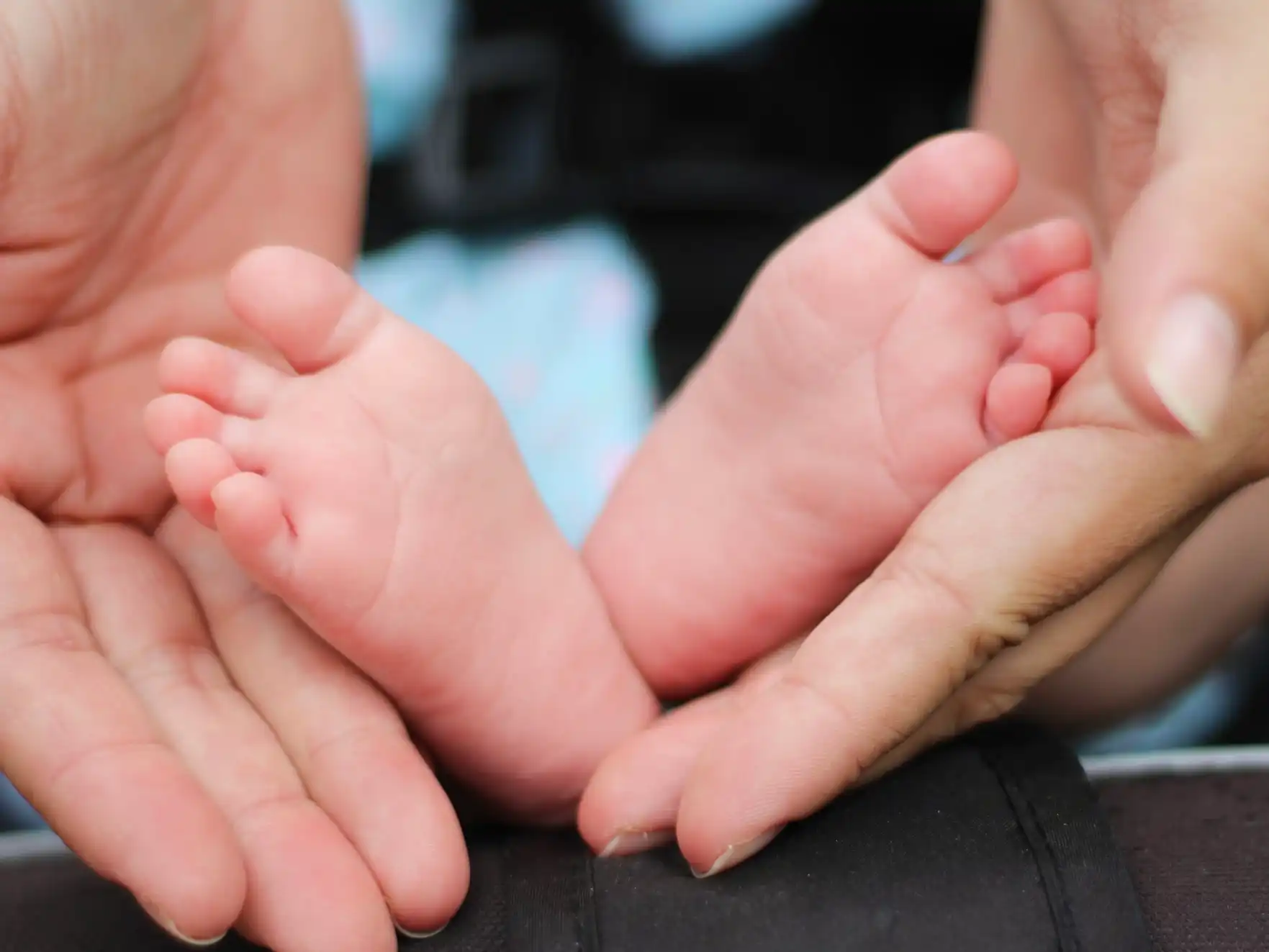Born With Flat Feet: Understanding and Managing Them
If you have flat feet, you’re not the only one. Millions worldwide face this issue. It’s also called pes planus or fallen arches. This guide explores the causes and what you can do about it. We cover types, symptoms, and how it might impact you. Plus, you’ll learn about treatments to make life easier.
Ever thought your flat feet could be useful? Are flat feet always a problem, or can they actually be an advantage in certain situations? The answer might surprise you. Learning more could change how you see your flat feet.
Key Takeaways
- Flat feet are when your foot arches are low or nonexistent.
- There are two types: flexible and rigid flatfoot, needing different treatments.
- If left untreated, flat feet can cause pain and make movement hard.
- There are non-surgical treatments like orthotics and exercises, plus surgery if needed.
- Staying at a healthy weight and doing strength exercises can help with flat feet.
What Are Flat Feet?
Flat feet is when the arches in your feet are low or missing. This makes your whole foot touch the ground. Many things can cause this, like family history, injury, or certain health issues.
Definition and Causes
Flat feet, or born with flat feet, mean the bottom of your foot is flat. It may run in your family. Or, it could happen because of tendon or ligament damage or some medical conditions like congenital flatfoot.
Types of Flat Feet
Flexible flatfoot changes when you stand or sit. Your arches look normal when you’re not standing on your feet. But when you stand, they flatten out. Rigid flatfoot stays flat, no matter what.
Signs and Symptoms of Born with Flat Feet
If you’re born with flat feet, you might notice some unique signs. A big one is when your ankles roll inward. This is overpronation. Overpronation can cause pain in your feet, ankles, knees, and hips. Your body is trying to make up for the lack of arch support.
Finding the right shoes can be hard with flat feet. There’s not enough arch to support your feet. This might lead to feeling tired or sore after standing or walking for a while. Your muscles and tendons work harder with flat feet, leading to discomfort.
One key visible sign of flat feet is the lack of an arch. Your feet look flat on the ground with no curve. This is why it’s sometimes called fallen arches or “flat” foot.
| Symptom | Description |
|---|---|
| Foot Pain | Discomfort or pain in the feet, often due to the excessive strain on the muscles, tendons, and joints. |
| Ankle Pain | Pain or discomfort in the ankles, caused by the inward rolling (overpronation) of the feet. |
| Knee Pain | Pain or discomfort in the knees, which can be a result of the body’s attempts to compensate for the lack of arch support. |
| Hip Pain | Pain or discomfort in the hips, also stemming from the body’s efforts to adapt to the flat feet condition. |
| Overpronation | The inward rolling of the ankles, a common characteristic of born with flat feet. |
| Difficulty Finding Shoes | Challenges in finding properly fitting shoes due to the lack of arch support required. |
| Fatigue and Discomfort | Feelings of tiredness or discomfort after prolonged standing or walking, a result of the added strain on the lower extremities. |
| Lack of Arch | The visible absence of a noticeable arch in the feet, a defining characteristic of born with flat feet. |
If you have flat feet and notice these symptoms, see a doctor. They will help you decide the best steps to deal with your flat feet.
Potential Complications of Flatfoot
Being born with flat feet might not worry some people. But, it could cause several problems if not treated. It’s important to be aware of these issues if you have flat feet. This knowledge can encourage you to take steps to keep your feet healthy.
Pain and Discomfort
Flatfoot can bring about a lot of pain and discomfort. This pain can appear in your feet, ankles, knees, hips, and even your back. When your foot arches collapse, it stresses your muscles, tendons, and joints. This stress can lead to ongoing pain and make everyday tasks hard.
Mobility Limitations
Flat feet can also limit how well you can move and your flexibility. This limit makes it tough to do sports or simple things like walk or go up stairs. Without proper arch support, you can lose balance and stability. This can significantly reduce how freely you can move and how easy it is.
Diagnosis of Flatfoot
Think you’re born with flat feet? Also called pes planus, getting a diagnosis starts with a detailed check-up. Your doctor will look closely at your feet, test how you move, and see if there’s any pain.
Physical Examination
Your doctor will look at your feet closely while you stand. They’re checking for a low or collapsed arch and if your ankles roll in. They might ask you to do a few movements, like standing on tiptoe, to see how flexible your arches are.
Imaging Tests
If the doctor needs more information, they might order imaging tests. These help get a better view of your feet’s bones and soft tissue. They could suggest:
| Imaging Test | Purpose |
|---|---|
| X-rays | Give detailed pictures of your feet bones. This helps check arch alignment and structure. |
| MRI (Magnetic Resonance Imaging) | Take detailed pictures of soft tissues like tendons. They show if there are any problems causing flatfoot. |
| CT (Computed Tomography) Scans | Show 3D views of your feet. They help find bone issues or other problems related to flat feet. |
After the exam and tests, your healthcare provider can pinpoint your flatfoot’s type and how serious it is. Then, they can plan the best treatment for you.
Born with Flat Feet in Children
Flat feet are common in kids. It’s important to know the types and treatments like flexible and rigid flatfoot. Most kids have the flexible kind. Their arches show when they aren’t standing. If they stand, the arches disappear. This often doesn’t need special treatment. But, rigid flatfoot is rarer. The arches stay flat, no matter what. This may need more focused care.
Flexible vs. Rigid Flatfoot
Most kids with flat feet have the flexible type. Their arches show when they’re feet are up. But when they stand, the arches go away. On the other hand, rigid flatfoot is when the arch never forms. This happens even when the child isn’t standing.
Treatment Options for Children
How flat feet are treated depends on the type and if there are any symptoms. Flexible flatfoot can often be managed with simple methods. These include orthotics, physical therapy, and special shoes. However, in more serious cases, surgery might be needed. This could involve tendon transfers or shaping bones to help the foot work better.
For both flexible and rigid flatfoot, the aim is the same. Treat any problems, make the foot work better, and avoid lasting troubles. Parents should work closely with doctors. This ensures their child gets the best care. This care supports their health and happiness.
Born with Flat Feet in Adults
Flat feet can be from birth or develop later in life. It’s essential to know the risks and causes for effective treatment.
Risk Factors and Causes
Adult-onset flat feet can come from various issues. These include being:
| Risk Factor | Description |
|---|---|
| Obesity | Extra weight strains your feet, causing the arches to fall. |
| Pregnancy | Weight gain and hormonal shifts in pregnancy might flatten your feet. |
| Aging | As we age, foot tendons and ligaments weaken, leading to flat arches. |
| Injury | Foot injuries or excessive use can harm support structures, causing flatfoot. |
| Medical Conditions | Health issues like arthritis, diabetes, or nerve problems can up adult flatfoot risks. |
Knowing these factors helps recognize those at risk for adult-onset issues like born with flat feet. It also guides us in preventing or managing the condition early.
Non-Surgical Treatment Options
If you were born with flat feet, there’s good news. Many non-surgical treatments can help. These methods can relieve your symptoms and keep problems from getting worse.
Orthotics and Arch Supports
Orthotics and arch supports are great for flat feet. They add support and cushioning. This eases pressure and balances the feet better. For the best fit, you might get orthotics made just for you.
Exercises and Physical Therapy
Exercising and physical therapy really help flat feet. They make your feet, ankles, and legs stronger and more flexible. This can lift your arches and boost how your feet work.
A personalized exercise plan from a therapist is a good idea. It can include stretches, balance training, and gentle strength moves. Together, these activities can improve your life with flat feet.
Surgical Interventions for Flatfoot
Often, non-surgical treatments can manage the problems seen with flat feet. But, sometimes, surgery is needed. It’s when the flatfoot is too severe for other treatments to work well.
Types of Flatfoot Surgery
Treatments for flatfoot may involve moving tendons, reshaping bones, and joining bones together. Tendon transfers improve how your foot lines up. Osteotomies reshape bones to make a natural arch. Joint fusions add stability by connecting bones together.
Deciding on the best surgery depends on what’s causing the flatfoot and how severe it is. Your doctor will help you choose the right surgery, looking at your personal situation.
Recovery and Rehabilitation
After flatfoot surgery, recovery takes time. You’ll probably need physical therapy and might have to use devices like crutches. It could be a few weeks to months before you can get back to normal activities.
Following your doctor’s and therapist’s instructions is key. Doing exercises, along with other rehab activities, will help you recover better. With time and effort, you should be able to do what you love again after surgery.
Living with Born with Flat Feet
Living with flat feet from birth means you’ll often need to adjust how you live. This includes wearing the right shoes and changing some habits. By doing so, you can reduce the pain and lower the risk of problems linked with this condition.
Footwear Recommendations
Choosing the right shoes is key for those with flat feet since proper support is crucial. It’s best to pick shoes that have good arch support, cushioning, and are stable. Features like motion control and firm heel support help keep your feet stable and supported.For discreet options, check here for our discreet flat feet insole post
Lifestyle Modifications
Sticking to the right shoes is not all you can do. Making some lifestyle changes is also vital. Keeping a healthy weight lessens the pressure on your feet. Low-impact workouts like swimming, cycling, or using an elliptical are great for staying fit without hurting your feet more. Also, taking short rests from prolonged standing or walking can ease flat feet symptoms.
Prevention and Management Strategies
Keeping a healthy weight is key for those with flat feet. Also called pes planus, flatfoot brings extra strain to the feet. If we eat well and stay active, we can keep a good weight. This helps lower the pain and discomfort from [born with flat feet].
Maintaining a Healthy Weight
Being at a healthy weight is crucial for coping with [born with flat feet]. Extra weight means more stress on the feet, which hurts. Eating healthy and moving more helps people with [born with flat feet] keep a good weight. This lowers the pressure on their feet and legs.
Strengthening Exercises
Doing certain exercises can really help someone with [born with flat feet]. These workouts aim to make the feet and ankles stronger. This improves how stable and supportive they are. Exercises like calf raises, toe curls, and working on balance are good. They make the foot muscles stronger and improve [born with flat feet]’s movement.
By following these steps, people with [born with flat feet] can deal with symptoms better. They can also stop future problems and live actively and happily.
Conclusion
We’ve looked deeply into what it means to have flat feet from birth, known as pes planus. We’ve covered the causes and types, complications, and how to treat it. Our aim was to give you what you need to handle your flat feet well.
If you’ve always had flat feet or if it happened over time, being proactive is key. By knowing the challenges and using the right strategies, you can ease symptoms and stay active. This approach can make a big difference in your life.
You’re on this journey with many others. With support, advice, and a readiness to make changes, life with flat feet can be well managed. Use the info we’ve shared to put your feet’s health first, leading to a healthier you.









